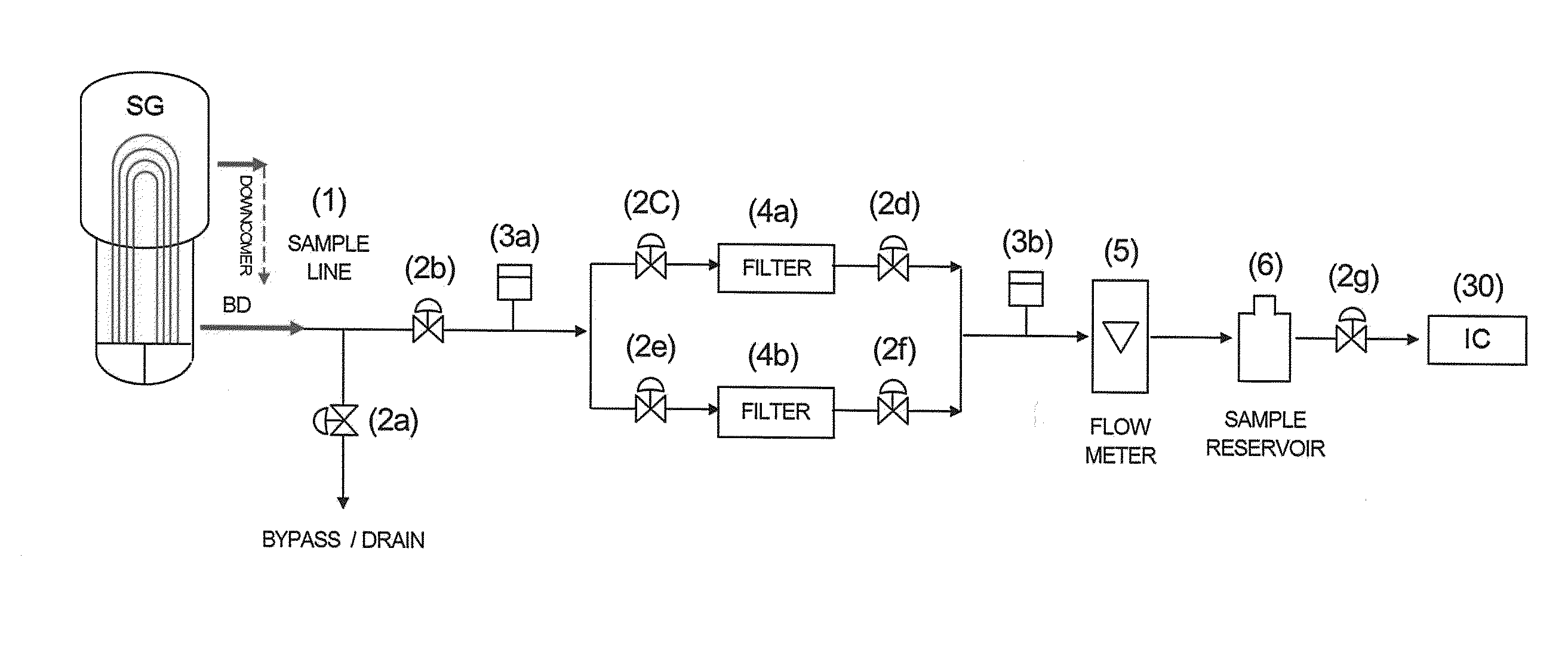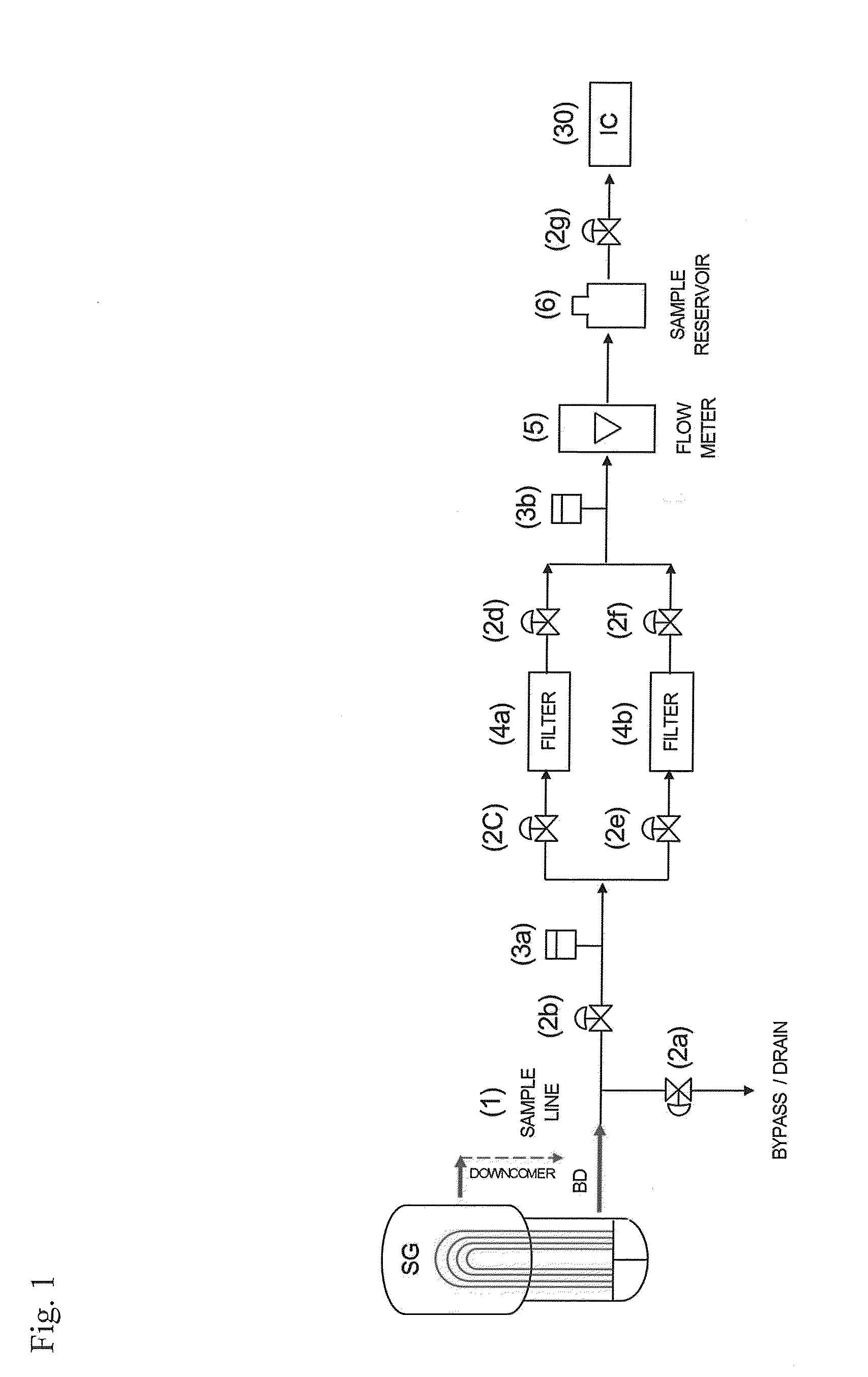Method and system for detecting boron ions using ion chromatography for online monitoring of steam generator tube leakage in light water reactor
a technology of boron ions and ion chromatography, which is applied in the direction of fluid tightness measurement, instruments, structural/machine measurement, etc., can solve the problems of time, inability to use, and inability to grasp the leakage point, so as to maintain high pressure in the system, the effect of prompt and accurate detection
- Summary
- Abstract
- Description
- Claims
- Application Information
AI Technical Summary
Benefits of technology
Problems solved by technology
Method used
Image
Examples
Embodiment Construction
[0054]Boron used for output control of a reactor exists as boron ions at a concentration of a wide range of 10 to 2,500 ppm in the primary side coolant of a steam generator for heat exchange. When the primary side coolant is leaked to the secondary side due to damage of a steam generator tube, the boron ions are diluted to ppb level and exist on the secondary side at a concentration of an extremely small amount.
[0055]The present invention is a monitoring technique using the boron ions existing on the secondary side of the steam generator of a reactor at a concentration of an extremely small amount like this as a leakage indicator of the steam generator tube and uses ion chromatography provided with a boron trapping column optimized for trapping an extremely small amount of boron ions and a deionization water supplier for rinsing a sample line in order to detect the boron ions existing on the secondary side of the steam generator of a reactor.
[0056]If general ion chromatography provi...
PUM
 Login to View More
Login to View More Abstract
Description
Claims
Application Information
 Login to View More
Login to View More - R&D
- Intellectual Property
- Life Sciences
- Materials
- Tech Scout
- Unparalleled Data Quality
- Higher Quality Content
- 60% Fewer Hallucinations
Browse by: Latest US Patents, China's latest patents, Technical Efficacy Thesaurus, Application Domain, Technology Topic, Popular Technical Reports.
© 2025 PatSnap. All rights reserved.Legal|Privacy policy|Modern Slavery Act Transparency Statement|Sitemap|About US| Contact US: help@patsnap.com



